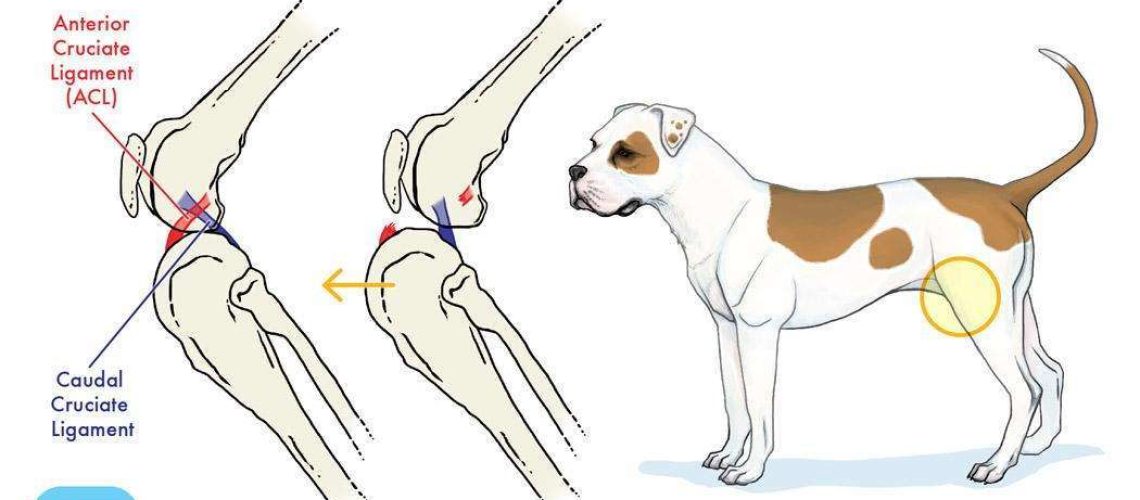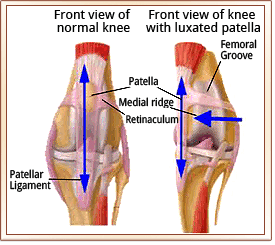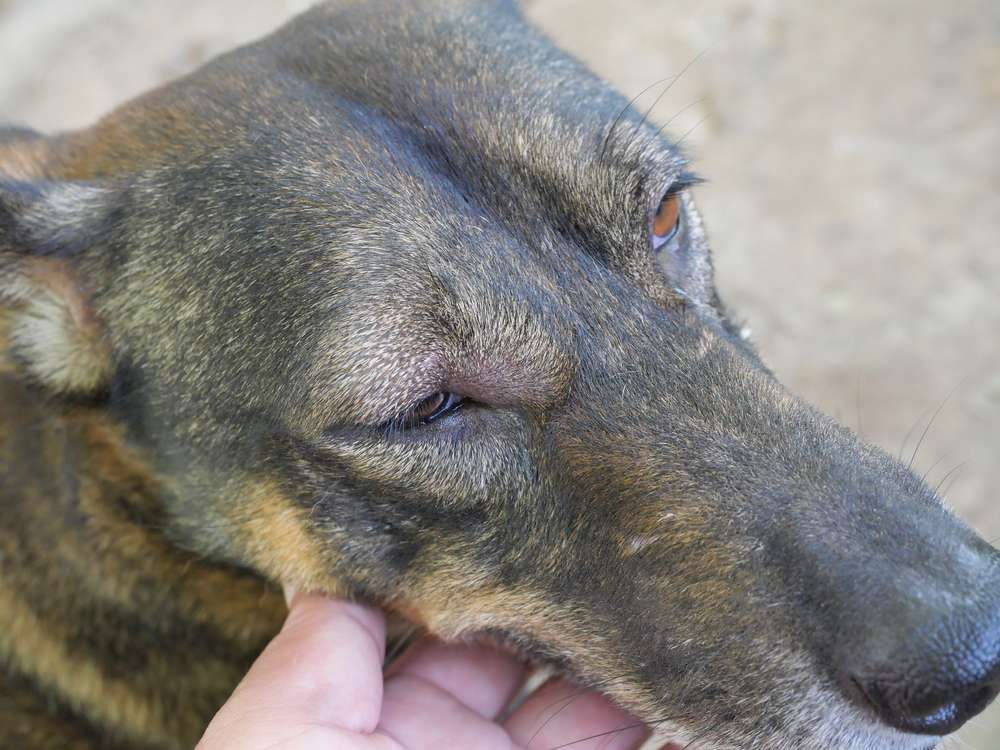Key Takeaways:
- Ruptured cruciate ligament is a common knee injury in dogs, especially in larger and active breeds.
- Symptoms of a ruptured cruciate ligament include lameness, swelling, and difficulty bearing weight on the affected leg.
- Surgical intervention is often necessary to repair a ruptured cruciate ligament and restore normal function to the dog's knee.
- Post-surgery rehabilitation and physical therapy are crucial for successful recovery and to prevent future injuries.
- Preventive measures such as maintaining a healthy weight, providing regular exercise, and avoiding excessive jumping or twisting can help reduce the risk of cruciate ligament injuries in dogs.
Are you a dog lover? Do you want to ensure the health and well-being of your furry friend? Then, understanding the topic of Ruptured Cruciate Ligament in Dogs is essential for you! This common injury can cause immense pain and discomfort to our canine companions, but by delving into this subject, you will gain valuable knowledge on how to prevent and treat it. Did you know that approximately 1 in 100 dogs suffers from a ruptured cruciate ligament each year? By exploring this topic further, you will discover practical tips and insights that can make a real difference in your dog's life. So, let's dive into the world of canine health and unlock the secrets to keeping our four-legged friends happy and active!
Understanding Ruptured Cruciate Ligament in Dogs
In dogs, the cruciate ligament is an important structure that helps stabilize the knee joint. However, sometimes this ligament can become injured or even rupture. When a dog's cruciate ligament ruptures, it means that it tears or breaks apart. This can happen due to sudden trauma, such as a fall or a collision, or it can occur gradually over time due to wear and tear on the ligament.
A ruptured cruciate ligament in dogs can cause pain, lameness, and difficulty walking. It is more common in certain breeds, such as Labrador Retrievers and German Shepherds. If your dog has a ruptured cruciate ligament, it is important to seek veterinary care to determine the best course of treatment.
Causes of a Ruptured Cruciate Ligament in Dogs
There are several ways that a dog's cruciate ligament can become injured or rupture. Some common causes include:
- Sudden trauma, such as a fall or collision
- Overexertion during exercise or play
- Obesity or excessive weight
- Weakened ligaments due to aging
Risk Factors for a Ruptured Cruciate Ligament in Dogs
While any dog can potentially experience a ruptured cruciate ligament, there are certain factors that may increase the risk. These include:
- Breed: Certain breeds, such as Labrador Retrievers and German Shepherds, have a higher predisposition for this injury.
- Age: Older dogs are more susceptible to ligament degeneration and rupture.
- Weight: Excess weight can put additional stress on the ligament and increase the likelihood of injury.
Signs of a Ruptured Cruciate Ligament in Dogs
When a dog experiences a ruptured cruciate ligament, there are several signs that may indicate this injury. One common sign is lameness or limping, especially in the hind leg. You may notice your dog favoring one leg and avoiding putting weight on it. Another sign is swelling around the knee joint, which can be accompanied by pain and tenderness when touched. Additionally, your dog may have difficulty getting up or climbing stairs due to the instability caused by the ligament tear.
If you suspect your dog has a ruptured cruciate ligament, it is important to consult with a veterinarian for an accurate diagnosis. They will perform a physical examination and may recommend further tests such as X-rays or an MRI to confirm the injury.
Common Signs of a Ruptured Cruciate Ligament:
- Lameness or limping
- Swelling around the knee joint
- Pain and tenderness when touched
- Difficulty getting up or climbing stairs
Seek Veterinary Assistance:
If you notice any of these signs in your dog, it is crucial to seek veterinary assistance promptly. Early diagnosis and treatment can help prevent further damage and improve your dog's chances of recovery.
Treating a Ruptured Cruciate Ligament in Dogs
The treatment for a ruptured cruciate ligament in dogs depends on various factors such as the size of the dog, severity of the injury, and overall health condition. One common treatment option is conservative management, which involves rest, anti-inflammatory medications, physical therapy exercises, and weight management to reduce stress on the affected leg.
In more severe cases, surgical intervention may be necessary. There are different surgical techniques available, including extracapsular repair and tibial plateau leveling osteotomy (TPLO). These surgeries aim to stabilize the knee joint and promote healing of the ligament. Your veterinarian will determine the most suitable treatment approach based on your dog's specific needs.
Treatment Options for a Ruptured Cruciate Ligament:
- Conservative management: Rest, medication, physical therapy, weight management
- Surgical intervention: Extracapsular repair, TPLO
Consult with a Veterinarian:
If your dog has a ruptured cruciate ligament, it is essential to consult with a veterinarian to discuss the best treatment options for your furry friend. They will evaluate your dog's condition and provide guidance on the most appropriate course of action.
Treatment Options for Dogs with a Ruptured Cruciate Ligament
When it comes to treating dogs with a ruptured cruciate ligament, there are several options available depending on the severity of the injury and individual circumstances. Conservative management is often recommended for smaller dogs or those with less severe injuries. This approach involves rest, anti-inflammatory medications to reduce pain and swelling, physical therapy exercises to strengthen surrounding muscles, and weight management to alleviate stress on the affected leg.
In more severe cases or larger dogs, surgery may be necessary to stabilize the knee joint and promote proper healing. Two common surgical techniques used are extracapsular repair and tibial plateau leveling osteotomy (TPLO). Extracapsular repair involves placing sutures around the knee joint to provide stability while TPLO involves altering the angle of the tibia bone to redistribute forces within the joint.
Conservative Management:
- Rest
- Anti-inflammatory medications
- Physical therapy exercises
- Weight management
Surgical Options:
- Extracapsular repair
- Tibial plateau leveling osteotomy (TPLO)
Selecting the Right Treatment:
The appropriate treatment option for a dog with a ruptured cruciate ligament depends on various factors. Consulting with a veterinarian will help determine the best course of action based on your dog's size, severity of the injury, and overall health condition.
Recovery Time and Care after Surgery for a Ruptured Cruciate Ligament
The recovery time and care required after surgery for a ruptured cruciate ligament in dogs can vary depending on several factors such as the surgical technique used, the dog's age, overall health, and adherence to post-operative instructions. Generally, it takes around 8 to 12 weeks for dogs to recover fully from cruciate ligament surgery.
During the recovery period, it is crucial to follow your veterinarian's guidelines carefully. This may include limiting your dog's activity level, providing pain medication as prescribed, and attending scheduled follow-up appointments. Physical therapy exercises may also be recommended to help strengthen the leg muscles and improve joint mobility.
Care Tips during Recovery:
- Limit activity levels as advised by your veterinarian
- Administer prescribed pain medication
- Attend scheduled follow-up appointments
- Follow physical therapy exercises recommended by your veterinarian
Patience and Consistency:
Recovery from cruciate ligament surgery requires patience and consistency. By providing the necessary care, following post-operative instructions, and being attentive to your dog's needs, you can help ensure a successful recovery and improve their quality of life.
Preventing Ruptured Cruciate Ligaments in Dogs
While it may not be possible to prevent all cases of ruptured cruciate ligaments in dogs, there are steps you can take to minimize the risk. Maintaining a healthy weight for your dog is crucial as excess weight puts additional stress on the joints, increasing the likelihood of injury. Regular exercise is also important to keep your dog's muscles strong and flexible.
Avoiding activities that involve sudden stops or changes in direction, such as high-impact sports or rough play, can help reduce the risk of ligament tears. Using proper equipment like harnesses or braces during physical activities may provide additional support to the knee joint. Additionally, regular check-ups with a veterinarian can help identify any early signs of joint problems and allow for timely intervention.
Tips for Preventing Ruptured Cruciate Ligaments:
- Maintain a healthy weight for your dog
- Engage in regular exercise to strengthen muscles
- Avoid high-impact activities with sudden stops or changes in direction
- Consider using supportive equipment during physical activities
- Schedule regular check-ups with a veterinarian
Promoting Joint Health:
By implementing these preventive measures and prioritizing your dog's joint health, you can reduce the risk of ruptured cruciate ligaments and contribute to their overall well-being and mobility.
In conclusion, a ruptured cruciate ligament is a common injury in dogs that can cause pain and difficulty in walking. It is important for dog owners to seek veterinary care and follow treatment options to help their furry friends recover and regain mobility.
Can a ruptured cruciate ligament heal itself in dogs?
In numerous cases, dogs, particularly smaller breeds, can experience an improvement or complete resolution of lameness caused by a partially torn or ruptured ACL without the need for surgery. This improvement typically occurs within a period of three to six weeks. However, it is important to note that this does not mean you should simply let your dog suffer during this time. They still require special care and attention from you.
Can a dog walk on a ruptured cruciate ligament?
In contrast to the ACL in humans, the cruciate ligament in dogs bears the load because a dog's leg remains bent while standing. If your dog's cruciate ligament is injured or torn, their knee will become unstable, impairing their ability to run and walk normally and causing discomfort.
How do you treat a cruciate ligament rupture in a dog?
The preferred method of treatment for complete cranial cruciate ligament rupture (CCLR) in dogs is surgical stabilization of the stifle joint. Along with surgery, physical rehabilitation will also be suggested.
Will my dog be in pain with cruciate ligament?
A tear in the cruciate ligament is typically very painful and causes instability in the knee joint, leading to limping. A longer-lasting form of cruciate damage can occur when the ligaments gradually weaken due to repetitive injuries or arthritis.
Should you walk a dog with cruciate ligament damage?
To reduce the inflammation around your dog's joint, it is important for them to rest in a comfortable position. Give your dog a break from walking and prevent them from jumping on furniture or using stairs.
Should a 10 year old dog have ACL surgery?
In summary, an ACL tear in a dog is a significant injury that can be treated. It is more commonly seen in older and larger dogs. These injuries are quite serious and typically necessitate surgical intervention for your pet.
















